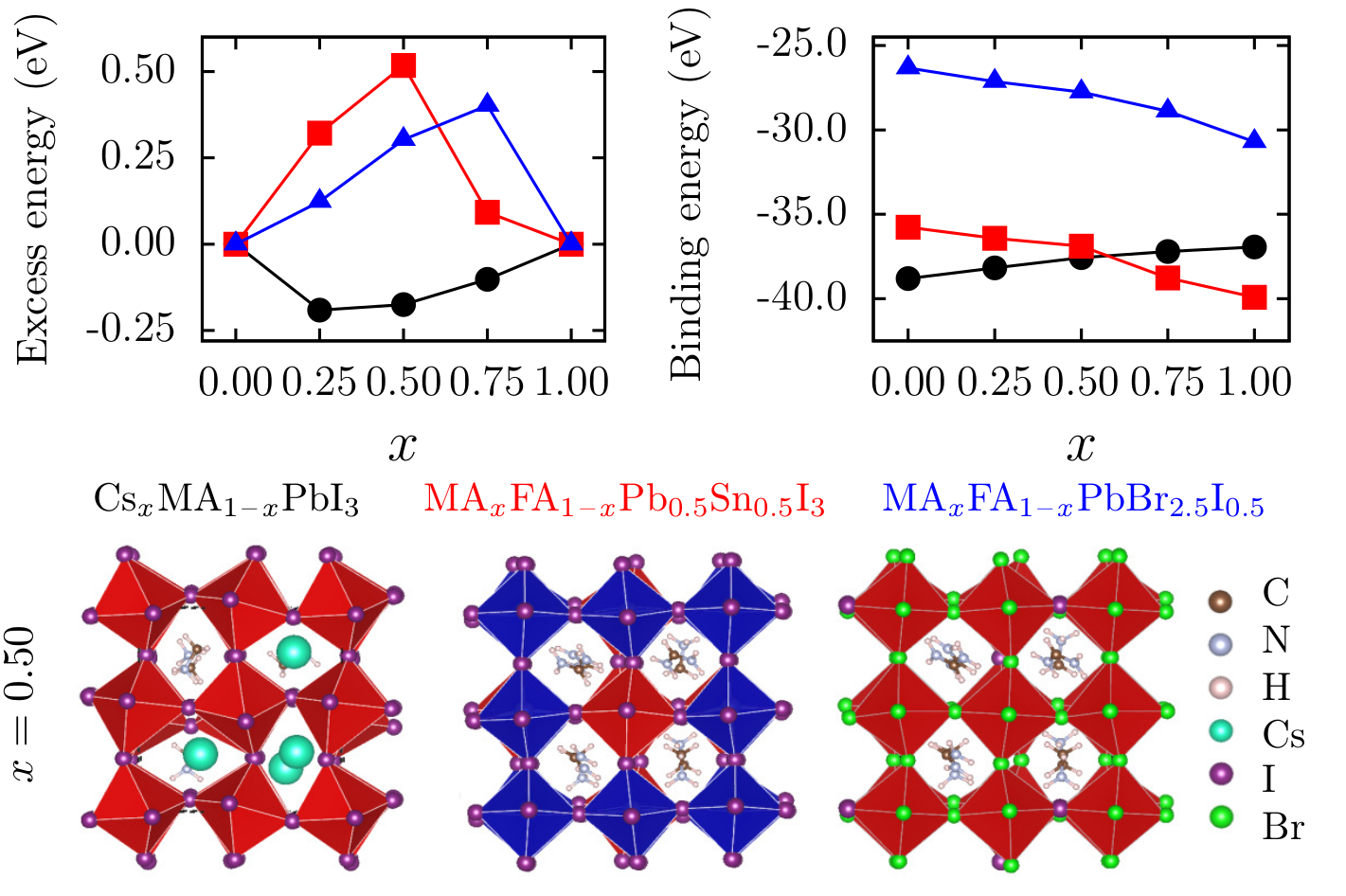Computational study of perovskite alloys gives insights for the production of efficient and stable solar cells

A study carried out within the Center for Innovation on New Energies (CINE) provides valuable information to continue developing perovskite solar cell technology, which can help popularize the use of photovoltaic energy due to its low production cost. To make the commercialization of this technology viable, one of the main challenges is to improve the stability of perovskites, directly linked to the durability of solar cells.
In this research, the focus was on the so-called perovskite alloys, which showed, in experimental studies, a very good performance in solar cells as the material responsible for absorbing sunlight and transforming it into electricity. Perovskites are materials that can have different chemical compositions, but their general molecular formula is always ABX3, with the A and B sites being formed by chemical species with a positive charge (cations) and the X site by species with a negative charge (anions). The particularity of perovskite alloys is that these sites are formed by more than one chemical element.
In this new work, the authors performed computer simulations to study, at the atomic scale, the properties of three perovskite alloys with very high efficiencies in converting light into electricity (over 23%). More precisely, they investigated how the presence of different chemical elements in cation A impacts the properties of the alloy. “The work brings important results that make it possible to obtain insights into the structural and optoelectronic properties of perovskites”, says Ramiro Marcelo dos Santos, postdoctoral researcher at IQSC-USP and first author of the article that reports the work in ACS Applied Energy Materials. According to him, thanks to computational studies like this one, it becomes possible to deepen the understanding of details of the structure of materials that, many times, are not accessible through experimental measurements.
The results obtained by Ramiro and the other authors, all members of the Computational Materials Science and Chemistry division at CINE, allow us to understand how the different mixtures of cations at the A site can be used to maintain a balance between structural stability and photovoltaic efficiency. For example, reported the authors, alloys with cesium cations (Cs+) perform best as materials for solar cells. “It is important to remember that a major highlight of materials based on perovskites is the possibility of reducing the cost of producing solar modules. Therefore, providing information that helps to develop this low-cost renewable technology is also contributing to equal access to clean energy”, concludes Ramiro.
The work was funded by FAPESP, Shell and CNPq, in addition to strategic support from the ANP.
Paper reference: Theoretical Investigation of the Role of Mixed A+ Cations in the Structure, Stability, and Electronic Properties of Perovskite Alloys. Ramiro M. dos Santos, Iván Ornelas-Cruz, Alexandre C. Dias, Matheus P. Lima, and Juarez L. F. Da Silva. ACS Appl. Energy Mater. 2023, 6, 5259−5273. https://doi.org/10.1021/acsaem.3c00186.
Authors of the article who are members of CINE or were members at the time of the study: Ramiro M. dos Santos, Iván Ornelas−Cruz, Alexandre C. Dias, Matheus P. Lima and Juarez L. F. Da Silva.
Contact

Juarez L. F. Da Silva
IFSC-USP - Brasil











